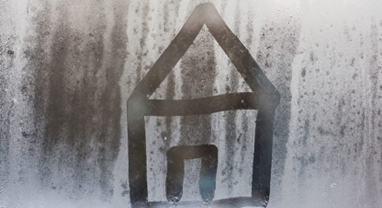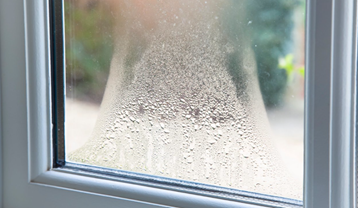Condensation on windows is a frequently heard problem. This problem is especially common when old leaky windows are replaced by new plastic or wooden windows. However, this problem also occurs in newly built and renovated houses. Condensation on windows can be of two types – from the inside and from the outside.
What does cause condensation on windows?
Sometimes it happens that the windows fog up from the outside. The appearance of fogging on the outside of new windows immediately causes many questions to people, but in fact, it only shows that the windows are of extremely high quality. More precisely, this effect is caused by good quality glass units.

glazed units, which do not have such good thermal properties, the heat leaving the room warms the outer glass and therefore it does not fog up.
If the condensation of windows from the outside makes you worry – calm down, you got not a defective product, but rather a very warm and high-quality product that perfectly retains heat inside the premises and saves money spent on heating.
Why condensation forms on windows from inside?
 Dew drops form when conditions are created for moisture in vapor state to condense. In the case of particularly good thermal insulation of the glass unit, high air humidity and air temperature higher than the temperature of the glass surface, moisture can temporarily condense on the glass surface. According to the laws of physics, a dew point is formed at a certain air temperature and relative humidity. Dew point is the temperature limit at which moisture begins to condense on the surface. The boundary between the vapor state of water and condensation is the so-called dew point. Since good quality windows raise the air temperature in the room by at least a few degrees, the water vapor capacity in the air increases accordingly. Leaving the ventilation system, the same as it was with leaky windows, will result in more water vapor in the warmer air and condense in areas of the room where the temperature is below the dew point. The colder the surface, the faster moisture will condense. This phenomenon is observed primarily on winter, autumn or spring mornings, with a very good U [W/m2K] coefficient of the glass unit, i.e. double-glazed units with Low-emission glass and argon gas or even triple-glazed units with two Low-emission glasses.
Dew drops form when conditions are created for moisture in vapor state to condense. In the case of particularly good thermal insulation of the glass unit, high air humidity and air temperature higher than the temperature of the glass surface, moisture can temporarily condense on the glass surface. According to the laws of physics, a dew point is formed at a certain air temperature and relative humidity. Dew point is the temperature limit at which moisture begins to condense on the surface. The boundary between the vapor state of water and condensation is the so-called dew point. Since good quality windows raise the air temperature in the room by at least a few degrees, the water vapor capacity in the air increases accordingly. Leaving the ventilation system, the same as it was with leaky windows, will result in more water vapor in the warmer air and condense in areas of the room where the temperature is below the dew point. The colder the surface, the faster moisture will condense. This phenomenon is observed primarily on winter, autumn or spring mornings, with a very good U [W/m2K] coefficient of the glass unit, i.e. double-glazed units with Low-emission glass and argon gas or even triple-glazed units with two Low-emission glasses.
If an aluminum spacer is used in the glass unit, then the narrow strip of the glass unit near the window frame is condensed, because aluminum is a good conductor of heat/cold, and through it the cold from the outside gets on the inner glass and freezes its edge. The temperature difference between the center and the edge of the glass may only be 0.5-1˚C, but this is enough for moisture to condense. In this case, it is necessary to ventilate areas well and often. Especially where the most water vapor accumulates due to natural causes (kitchen, bathroom, bedrooms, etc.) and where old leaky windows have been replaced with new ones.
The causes of condensation on the windows should be assessed in a complex way: make sure of the quality of the windows and prevent the formation of a dew point, i.e. maintain appropriate air temperature and humidity. In most cases, it is suggested to reduce the overall air humidity by ventilating the room.
In general, it can be said that this phenomenon guarantees the high quality of the glass units.

